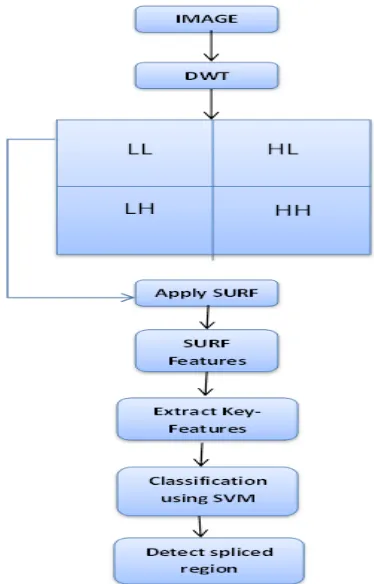Blind Approach for Digital Image Forgery Detection
Full text
Figure
![Fig. 4 Classification of Image Forgery Detection Techniques [3]](https://thumb-us.123doks.com/thumbv2/123dok_us/9298195.427888/2.595.322.534.190.696/fig-classification-image-forgery-detection-techniques.webp)
![Fig. 3 Example of Image Retouching (a) Original Image (b) Tampered Image [2].](https://thumb-us.123doks.com/thumbv2/123dok_us/9298195.427888/3.595.55.278.341.500/fig-example-image-retouching-original-image-tampered-image.webp)


Related documents
This article is the result of eight months of working through the is- sues and obstacles that preclude active participation in the reproductive rights movement
The primary contribution of this system is secure transmission of patient sensitive data to multiple data servers and performing statistical analysis on the patient
In this paper we propose an image quality measure for blurred images which uses non subsampled contourlet transform (NSCT) features and support vector regression for the
Brandenburg et al (1994) describes a series hybrid engine with electric traction motor drive of the vehicle wheels and regenerative braking system that converts the motor to
The improvement of gait pa- rameters during dual task (step width, step length, stance duration and walking speed) after CSF tapping showed in iNPH patients indicates a better
As reactive oxygen species are believed to be an important factor in platelet metabolism and func- tioning, the aim of our study was to perform a complex assessment of
These data would support the mechanism where different secreted proteins from tumor cells (such as PAI-1) exhibit also paracrine effects on proliferation of vascular cells.
